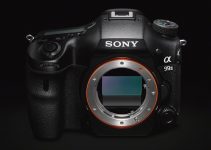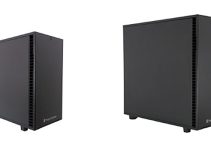Present me a filmmaker who doesn’t enjoy tinkering with new gear, who does not dribble on the latest and greatest piece of tech, and I will show you a free man. Jokes and misquotes aside, I think we can happily say that we filmmakers, or at least, most of us, are gearheads.
But not all that surfing the web looking for the new kid in town is in vain. Some pieces of gear are indeed very useful and can make our workdays much lighter or can save the day when some unexpected problems take by surprise. Let’s find out what The Hybrid Shooter is putting in his list of useful tools.
#1 – EXTERNAL MONITOR
The first spot is taken by an external monitor, and we have to agree. Few items can be as useful as a good bright and wide monitor when you try to focus or frame at a difficult angle. More so, if you’re shooting with something like the Sony A6000 series. Quoting directly. “it’s like going from a Nokia 3310 to a smartphone”.
I can’t think at better words to express how much of a leap forward it can be. In this case, we are talking of the Feelworld Master MA5, a nice 5.7″ monitor that can input a 4K signal, with nice build quality and good images right out of the box. It sports a good range of accessories right away and you can power it with Sony NP-F970/F550 batteries or the Canon LP-E6 with an adapter plate.
#2 – FLUID HEAD
This is more than an accessory we could say, and more of the “must-have” items for anyone in the field. A fluid head is different from the usual cheap and standard heads we see on tripods. It is in fact built to allow smooth pannings in all the directions.
Adjusting the friction gives you the chance to make quick or slow movements accordingly to your needs. In this case, we are talking of one of the most used heads probably, the Manfrotto Fluid Head MVH502AH.
Well, where are you going to put the nice fluid head you just got? Obviously (but not only!) on a tripod. A good tripod will be sturdy but lightweight, and the better ones use carbon fiber to achieve that. Here we are looking at the Zomei 699C, a nice lightweight and reliable tripod.
#3 – SLIDER
The difference in drama, intensity and overall “cinematic” feeling that a slider can give you is not something that you can explain easily, you need to see it. And more so if the slider is not a mechanical one, but one of the recent electronic app-paired sliders on the market.
Here we have the very small and light Smartta SliderMini. It has an app to control it, time-lapse function, you can change speed and duration of the movement, all in all, a great piece of equipment.
#4 – GIMBAL
Gimbals are all the rage right now. A flood of various makers and models has reached the market giving us a lot of choices. A gimbal lets you take steady moving shots using its accelerometers and motors to compensate for the shaky movements you could make while moving, but with an easier learning curve of a steady cam.
There are a lot of different gimbals with different payloads, form the GoPro sized Feiyutech G6, the smartphone kind like the Moza Mini-Mi and the camera ones like the Zhiyun Crane Plus. Recently the Zhiyun Crane 3, the Weebill has hit the market.
#5 – CAGE
Most of the small mirrorless cameras, like the A6000 series, but not only those, have a physical limit to how much gear you can attach to form a rig. It may be the hot shoe, or maybe the cheese plate screw on the bottom, but that’s about it. If you want to assemble a nice and functional rig you’ll need more expansion capabilities, and that means getting a cage.
There quite a few, SmallRig has a good series of kit options for the A7III, G9, A6500 or M50. Often times, again mostly on smaller cameras, a cage could also mean have a better grip on the camera itself, giving you a better filming experience and consequently allowing for better shots.
#6 – LENS
Behold, as we enter one of the most discussed and various topic of filmmaking: The Lens. we all know that countless words have been written and countless video have been shot about lenses. Obviously, it is one of the most important items in the filmmaker’s bag, but when you are beginning your journey in this world there are a couple of factors that you should keep in mind.
Beside the first thing that comes to mind is image quality, made of sharpness, chromatic aberrations and such, you should also think about what kind of use you’ll make. Are you going to zoom a lot? Get a parfocal lens like the Sigma 18-35mm f/1.8 or the Panasonic 12-60mm f/2.8-4. Watch for ease of use or small caveats like aperture varying with the focal distance. If you use autofocus a silent motor would be the better choice. We can note also the Tamron 28-75mm f/2.8 as a lens with a great price to value ratio.
#7 – FILTERS
The main filters in the filmmakers’ bag are going to be with no doubt the ND filter and the polarizer. The ND is so useful in fact that many cameras have it internally. That is not our case, however, so we shall turn to a filter to put on top of the lens like the PolarPro QuartzLine ND8/PL. But what for are we using these filters?
The ND, that stands for Neutral Density, as the name says, are neutral filters that eat up light without tinting it and are particularly useful to keep aperture and shutter speed at intended values in high brightness situations, like shooting in the daytime.
These allow for a correct proportion between frame rate and shutter speed, also known as a 180° shutter rule. The polarizer instead is very useful to eliminate reflections on some surfaces and it pumps the sky pushing the blues and the clouds. There are variable ND filters that can be a good compromise covering a wide range of exposures.
#8 – EXTERNAL RECORDER
One thing we can all concur is that a mirrorless camera cannot offer audio inputs and quality as a purpose made piece of gear like an external recorder. We are watching here the Zoom H1N, one of the many possibilities in the Zoom line.
A compact and lightweight recorder allows to monitor the audio, it has a knob to set levels, and connected in USB it turns in a microphone good to record a voiceover.
#9 – MICROPHONE
A good microphone will pair well with the aforementioned recorder. something like the Rode VideoMic Pro could be a great addition. Very handy, it has good quality, and it is very light.
Plus, it’s pretty directional and has preamps, so you can amplify the sound before going inside the recording device, be it the camera or the recorder. The only bummer is it needs 9v batteries to operate and you need to turn it on overtime you are going to use it.
#10 – LIGHT
Last but not least, lights. A small light like a 160 or 228 Led portable light by Neewer is a nice touch on your camera. It will give that little fill to the subject right in front of you, or you can detach it and use it as an accent or backlight.
They both go on Sony batteries, while the 160 can take also common AA. Small and portable they can fit in a pocket and you could put them virtually anywhere to give that little touch of finishing light your frame needed.
So what do you think? It’s a basic list but all of these items will prove very useful indeed to anyone wanting to start on his own gear collection.
[source: The Hybrid Shooter]
Disclaimer: As an Amazon Associate partner and participant in B&H and Adorama Affiliate programmes, we earn a small comission from each purchase made through the affiliate links listed above at no additional cost to you.




